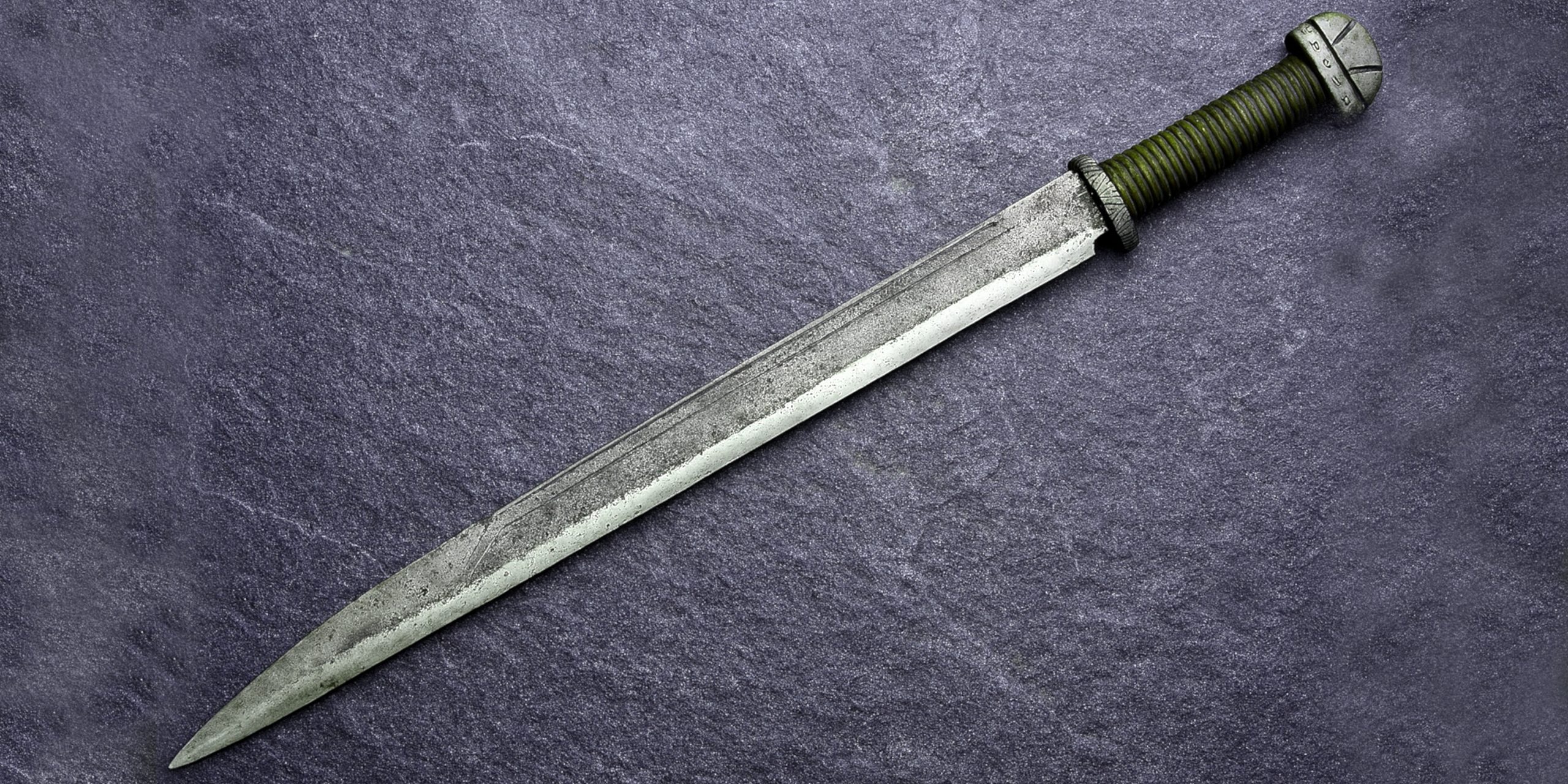
The Scramasax, sometimes shortened to sax or seax, was a single-edged knife or short sword widely used in early medieval Europe. It is most closely associated with Germanic tribes such as the Saxons, Franks, and Lombards, and was carried both as a weapon and a utilitarian tool. Its straight, robust blade and practical size made it effective for close combat as well as everyday cutting tasks. Archaeological finds show that the scramasax was as much a cultural symbol as it was a functional object, with many examples featuring decorative fittings and inscriptions.
Specification
| Feature | Typical Range / Description |
|---|---|
| Blade Length | 20 cm to 75 cm depending on type |
| Blade Shape | Single-edged, straight or slightly curved back |
| Point Type | Often angled or clipped point for penetration |
| Hilt | Simple wooden, horn, or bone grip; no guard or a small metal fitting |
| Tang | Full tang construction for strength |
| Materials | Iron or pattern-welded steel for blade; organic or metal fittings |
| Sheath | Leather, sometimes with metal fittings and suspension loops |
History and Evolution
The scramasax appeared during the Migration Period (5th–6th centuries) and remained in use until the early medieval period, particularly between the 6th and 10th centuries. Originating among Germanic warrior cultures, it evolved from smaller utility knives into larger, more weaponised forms.
Early forms were relatively short, used for daily tasks as well as personal defence. By the 8th and 9th centuries, the weapon had lengthened in some cases to become almost a short sword, suited to both slashing and thrusting in battle. Pattern welding and inlay decoration became more common, suggesting an increased role as a status symbol.
In England, the term “seax” became strongly associated with Saxon identity, even appearing in heraldic imagery such as the seaxes on the coat of arms of the County of Middlesex. In Frankish territories, the scramasax was regulated under weapon laws, reflecting its perceived importance.
Advantages and Disadvantages
Advantages
- Versatile, serving as both a tool and a weapon
- Strong single-edged blade suited to chopping and thrusting
- Easier to manufacture than double-edged swords
- Compact size made it easy to carry daily
- Durable construction with full tang design
Disadvantages
- Shorter reach compared to swords or spears
- Limited cutting surface compared to curved blades
- Lacked the protective hand guard of larger weapons
- Heavier examples could be less nimble in prolonged combat
Comparison with Similar Weapons
| Weapon | Key Differences from Scramasax |
|---|---|
| Viking Sword | Longer, double-edged, more reach and cutting power; less useful as a tool |
| Langseax | Larger variant of the seax, often approaching sword length |
| Falchion | Later medieval curved single-edged sword, optimised for cutting |
| Bowie Knife | Modern parallel in size and function but with a pronounced clip point and cross-guard |
Legacy
The scramasax has retained a strong presence in archaeological literature and museum collections due to its cultural symbolism and role in early medieval warfare. It serves as a recognisable emblem of Saxon heritage and craftsmanship. Many surviving examples are richly decorated, demonstrating that it was also a status marker. Modern historical reenactment groups and blacksmiths continue to produce replicas for educational and ceremonial use.
Where to See
- British Museum, London – Several Anglo-Saxon seaxes, including examples from the River Thames
- National Museum of Denmark, Copenhagen – Early medieval seaxes from Danish bog and burial finds
- Rheinisches Landesmuseum, Bonn – Frankish scramasaxes with pattern-welded blades
- Liebieghaus, Frankfurt – Decorated Migration Period knives
Collectors Guide and Auction Prices
Collecting Notes
- Provenance is key; items with documented archaeological context command higher values
- Condition affects price significantly, especially blade integrity and surviving hilt materials
- Pattern-welded examples and those with inscriptions are especially sought after
- Conservation and authenticity verification are essential before purchase
Recent Auction Prices
| Item Description | Auction House / Year | Price Range |
|---|---|---|
| 8th century Anglo-Saxon seax fragment | Bonhams, 2023 | £1,200–£1,800 |
| Frankish scramasax with inlay | Hermann Historica, 2022 | €4,000–€6,000 |
| Viking Age seax with full tang | Christie’s, 2021 | £3,500–£5,000 |
| Migration Period knife (utility size) | Timeline Auctions, 2024 | £600–£900 |



